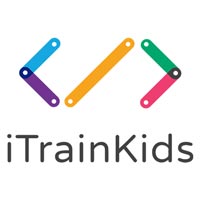By Elle Monaghan, Content Producer, Bett Global
Lockdown has prompted us all to readdress our relationship with our own wellbeing and its intersection with technology. For young people, where the lines between socialising and technology are particularly blurred, these conversations are particularly important. Below are some of the key factors of digital wellbeing we should be sensitive too during school closures and during our return to normality.
Staying in Control of Screen Time
How many of us have had that dreaded message flash up on our phone to warn us that our screen time has risen exponentially since the start of lockdown? Due to social distancing, screens now feature in almost every aspect of our day from exercise tutorials to work to socialising. Now, more than ever, it is essential to make sure that students are able to critically reflect upon their screen time and be aware of their online usage. Whilst our daily devices provide us with some much-needed relief from stressors during this uncertain time, this is also a good opportunity to embed healthy tech habits into our daily routine.
Online Influencers and Identity
The online world offers a vast range of opportunities for creativity, learning and socialising. However, it is also prone to influencing us in both positive and negative ways. Thanks to social media and online platforms such as Facebook, Instagram, Snapchat and Twitter, we are able to connect with more individuals across the globe than ever before, but it is essential that we are also able to critically evaluate the motivation behind posts, how to cope with pressure and judgement and how to ensure that we are consistently aware of our own privacy. These can be daunting challenges for young people, who may take the things they see online at face value rather than investigating further.
Identifying Fake News and Managing Information
Whilst there is a particularly high focus on news outlets due to the global pandemic, it will always be important to question the claims we find online. In some of our other blogs, we’ve heard from experts on the importance of not obscuring current affairs from young children who may be frightened of recent news stories, but students of all ages are regularly exposed to fake news and clickbait on a daily basis. During this time it’s important to make sure that students are properly clued in on how to recognise fake news, check the sources of news articles and understand why people might share this information.
Cyberbullying and Digital Citizenship
Bullying is defined as repeated negative behaviour that is intended to make others feel upset, uncomfortable or unsafe. Unfortunately, the number of children and young people who have experienced bullying online has increased by 88% over the last five years according to the NSPCC. However, it is possible to develop a whole school approach to bullying which involves children acting as anti-bullying ambassadors, providing support to peers both online and offline. With socialising taking place almost exclusively online right now, its essential that students are well informed of the definition, causes and effects of bullying and have the right guidance in order to become responsible digital citizens, and #StandUpToBullying.
Looking to find out more about digital wellbeing and cyberbullying?
The Diana Award Anti-Bullying Campaign have made a range of resources available through their Support Centre in order to help students, educators, parents and carers remain aware of the importance of digital wellbeing and look out for red flags when learning and socialising online. Check out their website here for lesson plans, infographics and information on how to join the anti-bullying ambassador programme.

.png?width=423&height=100&ext=.png)





.png?ext=.png)




















